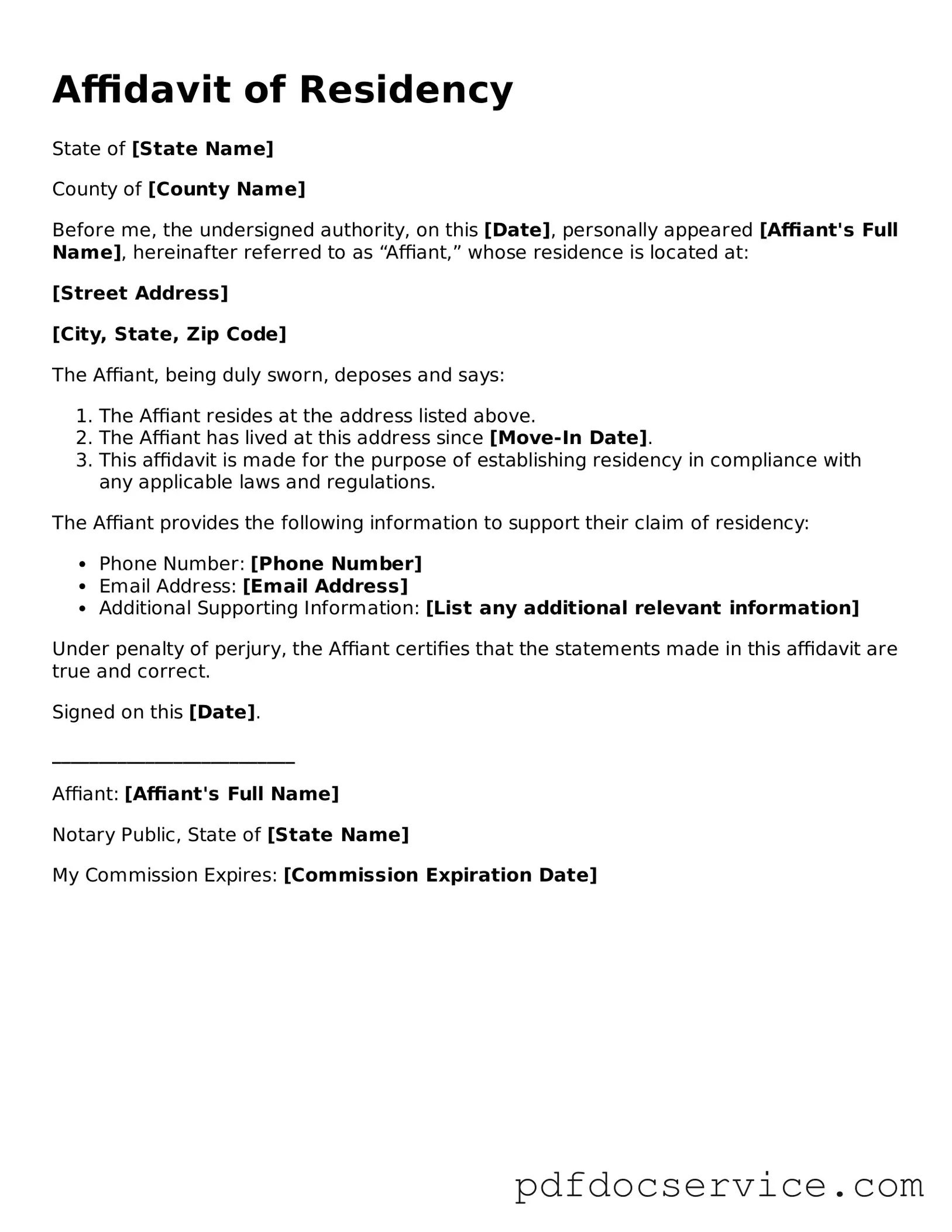What is an Affidavit of Residency?
An Affidavit of Residency is a legal document used to verify a person's residence. It is often required by schools, government agencies, or other institutions to confirm that an individual lives at a specific address. This form typically includes the individual's name, address, and a declaration of residency, which is usually signed under oath.
Who needs to complete an Affidavit of Residency?
Individuals who need to prove their residency for various purposes may need to complete this form. Common scenarios include:
-
Parents enrolling their children in school.
-
Individuals applying for government assistance.
-
Residents seeking to register to vote.
The Affidavit of Residency typically requires the following information:
-
Your full name.
-
Your current address.
-
The length of time you have lived at that address.
-
Any additional information requested by the institution requiring the affidavit.
You can usually obtain an Affidavit of Residency form from the institution requesting it. Many schools and government agencies provide downloadable versions on their websites. Alternatively, you can visit their office to request a hard copy.
Do I need to have the Affidavit notarized?
In many cases, yes. An Affidavit of Residency often needs to be notarized to ensure its validity. Notarization involves a notary public witnessing your signature and confirming your identity, which adds an extra layer of authenticity to the document.
Some institutions may allow you to complete the Affidavit of Residency form online. Check the specific requirements of the agency or school you are dealing with. If online submission is permitted, ensure you follow their instructions carefully.
Providing false information on an Affidavit of Residency can lead to serious consequences. This may include legal penalties, loss of benefits, or expulsion from school. It is crucial to ensure that all information provided is accurate and truthful.
How long is the Affidavit of Residency valid?
The validity of an Affidavit of Residency can vary based on the institution's requirements. Some may accept it for a specific period, while others may require a new affidavit each year or whenever your residency status changes. Always check with the requesting agency for their specific guidelines.
Where should I submit the completed Affidavit of Residency?
The completed affidavit should be submitted to the institution or agency that requested it. This may involve mailing the document, submitting it in person, or uploading it through an online portal. Ensure you follow their specific submission instructions to avoid any delays.
